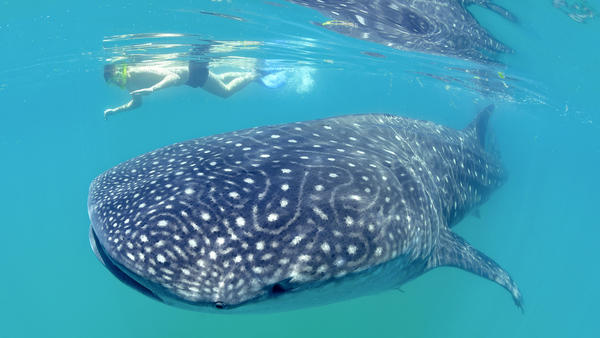Los Angeles Times writer Christopher Reynolds recently visited Isla Holbox and came away raving about the island’s many attractions.
Several weeks before I found myself uncomfortably close to the world’s largest shark, I told a few folks I would be going to Holbox.
“Whole what?” asked more than one.
“Ohl-bosch,” corrected the locals when I arrived.
It’s not an American household name yet, but it has fine sand, palm trees, wild flamingos and beachfront hotels charging less than $200 a night.
Moreover, if you take a boat out from mid-May through mid-September, you have a good chance of swimming with a whale shark. There is no bigger fish.
They grow to as much as 40 feet long and 30,000 pounds. Their gray flanks are peppered with white polka dots. Their mouths are up to 3 feet tall and 4 feet wide. Because they’re filter-feeders, consuming mostly plankton, they swim through life with their wide mouths open, no teeth in sight.
It’s about 26 miles long and a mile wide and is developed only at its eastern end. You’ll want mosquito repellent.
Most visitors arrive after a three-hour ride by taxi, van or bus from Cancún, then a half-hour ferry from the coastal town of Chiquilá.
The temperature is rarely cooler than 65 degrees, rarely hotter than 90.
Before long, somebody will explain that the word “Holbox” comes from a Mayan phrase for “black hole,” perhaps derived from local freshwater springs.
So far there are no global hotel or restaurant brands — in fact, no hotels with more than about 45 rooms. About a dozen beachfront lodgings are lined up along Holbox’s north-facing shore, where the dock is.
To read complete article click here.
Source: latimes.com


